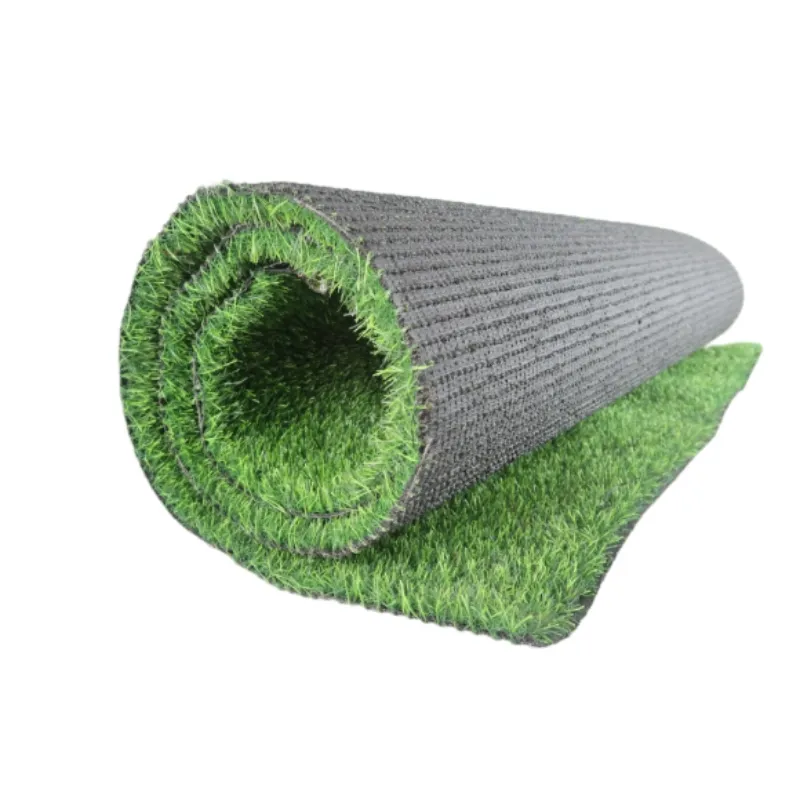
- Afrikaans
- Arabic
- Belarusian
- Bengali
- Czech
- Danish
- Dutch
- English
- Esperanto
- Estonian
- Finnish
- French
- German
- Greek
- Hindi
- Hungarian
- Icelandic
- Indonesian
- irish
- Italian
- Japanese
- kazakh
- Rwandese
- Korean
- Kyrgyz
- Lao
- Latin
- Latvian
- Malay
- Mongolian
- Myanmar
- Norwegian
- Persian
- Polish
- Portuguese
- Romanian
- Russian
- Serbian
- Spanish
- Swedish
- Tagalog
- Tajik
- Thai
- Turkish
- Turkmen
- Ukrainian
- Urdu
- Uighur
- Uzbek
- Vietnamese
Effective Drainage Solutions for Artificial Grass Installation and Maintenance
Nov . 08, 2024 05:14 Back to list
Drainage Under Artificial Grass An Essential Consideration for Durable and Functional Landscapes
Artificial grass has gained immense popularity in various applications, from residential lawns to sports fields and public parks. Its aesthetic appeal, low maintenance requirements, and ability to withstand heavy foot traffic make it a preferred choice for many. However, one critical aspect that often gets overlooked is drainage. Proper drainage under artificial grass is essential to ensure its durability, functionality, and long-term performance.
Importance of Drainage
The primary purpose of drainage in landscaping is to manage water efficiently, preventing pooling and excess moisture that can lead to various problems. In the case of artificial grass, inadequate drainage can result in significant issues such as
1. Water Accumulation Excess water can accumulate on the surface of artificial grass, creating a muddy and unattractive appearance. This can deter people from using the area, defeating the purpose of installing the grass in the first place.
2. Mold and Mildew Growth Stagnant water provides an ideal environment for mold, mildew, and algae to thrive. These can not only compromise the visual appeal of the artificial grass but also pose health risks to users, especially in humid regions.
3. Damage to the Base Layer Artificial grass is typically installed over a base layer of compacted gravel or sand that promotes drainage. If water is not properly channeled away, it can erode or weaken this base layer, leading to uneven surfaces and the potential for the grass to wrinkle or become loose over time.
4. Increased Maintenance When drainage is inadequate, the accumulation of debris and organic matter becomes more likely. This situation leads to increased maintenance efforts, requiring regular cleaning and potential replacements of the grass or underlying materials.
Designing for Effective Drainage
drainage under artificial grass

When installing artificial grass, several best practices can help ensure that drainage is effectively managed
1. Site Assessment Before installation, it is crucial to evaluate the site’s natural drainage patterns. Identifying low spots, high spots, and existing drainage systems can provide vital information for planning an effective drainage strategy.
2. Proper Drainage Base A well-draining base is essential for any artificial grass installation. Typically, a mixture of sand and gravel is used to create a stable base that allows water to percolate through. A depth of at least 3 to 4 inches of this base material is recommended for optimal drainage.
3. Perforated Drains Installing perforated drainage pipes or french drains around the perimeter of the artificial grass can help redirect excess water away from the playing surface. This is particularly important in areas with high rainfall or poor drainage.
4. Slope Maintenance Ensuring that the area is graded correctly helps facilitate water runoff. A slope of at least 1-2% away from structures and areas where water tends to accumulate can make a significant difference in water management.
5. Infiltration Features In addition to proper grading and drainage base, incorporating infiltration features such as swales or bioretention areas can enhance drainage. These measures collect stormwater and facilitate absorption into the ground, reducing the likelihood of water pooling.
Conclusion
The installation of artificial grass can provide a stunning, functional, and low-maintenance landscape solution. However, without proper drainage considerations, the long-term benefits of artificial grass can be jeopardized. By taking the time to evaluate site conditions, employing an appropriate drainage base, and implementing effective water management practices, property owners can ensure that their investment in artificial grass serves its intended purpose while enhancing the overall landscape. In essence, effective drainage is not just an accessory to artificial grass installation; it is a fundamental requirement for achieving a durable and visually appealing outdoor space.
-
The Benefits of Artificial Turf for Indoors
NewsJul.15,2025
-
How Artificial Grass Suppliers Ensure Quality Products
NewsJul.15,2025
-
Artificial Grass and Pets: A Space for Relaxation
NewsJul.08,2025
-
Balcony & Outdoor Decoration with Artificial Grass
NewsJul.08,2025
-
Best Indoor Artificial Grass for Home
NewsJul.07,2025
-
Best Pet Turf for Dogs: Safe & Durable Artificial Grass Options
NewsJul.07,2025
Products categories









